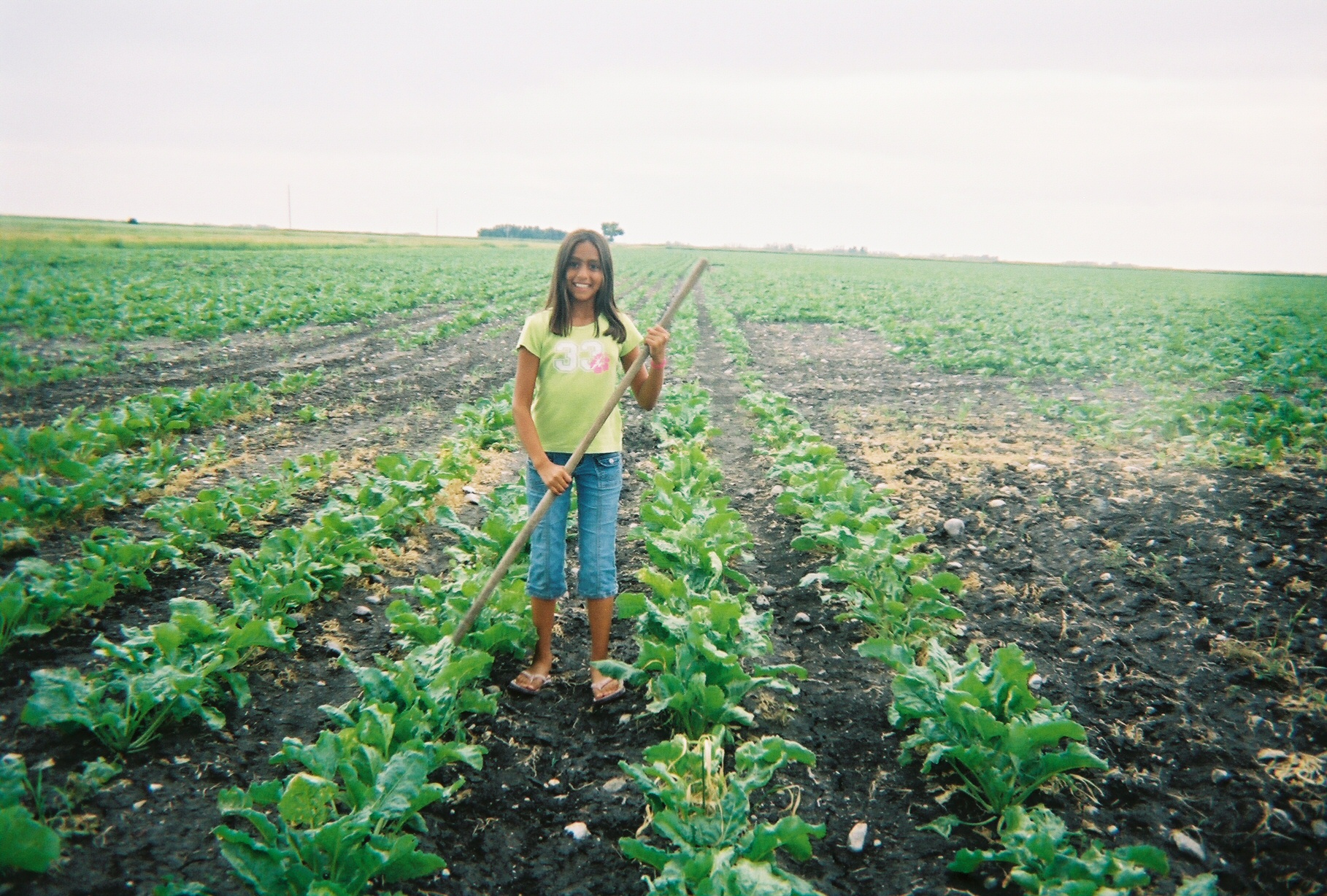Posts
With DOL Support, AFOP Brings Peer Best Practices Sharing
/in Member News /by AFOP CommunicationsRural Employment Opportunities (REO), a statewide non-profit in Helena Montana, participated in the AFOP Peer Best Practices Sharing Program in April. Individuals from the NFJP programs in Texas and Arkansas flew into Helena along with AFOP Workforce Development Director Katy Nelson from AFOP headquarters in Washington, DC.
In the last two years, REO has had an almost complete turn over in staff including the executive director, program manager, CFO and most of the employment and training case managers so there was a huge gap in historical knowledge and operational practices. It was extremely valuable to sit down with knowledgeable colleagues and be able to ask questions about how their programs operate. We were able to discuss the new WIOA funding and regulations as well as ask about database issues, recruitment and where to find needed resources. In addition, we were able to validate some of our own processes and procedures. We brought all of our staff in from across the state and they were able to get the “whys” behind some of the regulations and learn how the NFJP program has changed over the years.
One of the most valuable things about the program beyond the depth of knowledge these folks had, was the ability to really get to know them and feel like there was a place to go to get answers. The genuine concern and willingness to help that was brought to the table makes this an extremely valuable program to all grantees.
Reported by Jami Anderson Lind, Executive Director at REO Montana
Peer Best Practice Sharing and Review participants also gathered in Oklahoma City, Oklahoma for a demonstration of ORO Development Corporation’s electronic case management system and its integration with a paperless office system. Participants spent two days talking to systems experts and ORO program staff to learn about their experience transitioning to a paperless systems, and the ways the systems have been beneficial to their operation and client services.
“I was happy to see how the electronic system workout for another organization and see their results. It was important to see how the filing system has the capability to have it work for your organizations style.”
One participant reported, “I was happy to see how the electronic system workout for another organization and see their results. It was important to see how the filing system has the capability to have it work for your organizations style.” Another said, “A major takeaway is that change can always be challenging. I think training is a challenge, getting everyone used to a new process. I think it will be a big job because of the variety of programs we work with, but I think, long term, it will save time, money and obtain good results.” Another participant stated about the setting, “I have sat in classes at different conferences about CERTSS; it was nice to see how it actually works by having an actual case manager work with it. I learned about current barriers that ORO case managers face when they are out in the fields that could also be a potential barriers for our staff in regards to internet connectivity.”
If you are interested in participating in peer best practices sharing and review, please contact AFOP Workforce Development Director Katy Nelson at nelson@afop.org.
New OT Rule Raises Question: Why Not Farmworkers?
/in From the Executive Director's Desk /by AFOP Communications
From the Desk of the Executive Director
Daniel J. Sheehan
AFOP Executive Director
The Center for Budget and Policy Priorities (CBPP) recently praised the Obama Administration’s new rule making millions of workers eligible for overtime pay as the president’s “most significant action on behalf of middle-class paychecks.” The rule boosts the threshold salary level under which salaried employees must be paid overtime (OT) from $23,660 a year to $47,476. Regrettably, though, and as the Association of Farmworker Opportunity Programs (AFOP) is quick to point out, the Nation’s farmworkers are once again left out of needed reform. The only unanswered question remains “Why?”
According to the CBPP, the new rule will directly affect 4.2 million workers. The Department of Labor says that is the number of salaried workers newly eligible for overtime pay. That is, their weekly salary stands between the current and the new threshold, between $455 and $913. CBPP argues that not everyone in that range will end up working overtime — though about 20 percent regularly do so — but if they do, they will now be eligible for the OT premium.
The Department of Labor also believes the new rule will also indirectly affect 8.9 million workers. These are also workers who earn between the old and the new thresholds, but the difference between them and the directly affected group is that these workers should already be getting overtime pay, but are not. The rules state that when someone’s duties at work are such that they are not bona fide exempt workers, they should be covered by OT. These workers tend to really not manage or supervise other workers — they are not recognizable as executives, professionals, or administrators — and thus should be non-exempt. Now, because their pay is under the new threshold, there should be no more ambiguity about their coverage status. That is about 8.5 percent of employment, affected directly or indirectly, says CBPP.
The Center concludes its analysis that the Administration’s action is a progressive change that was a long-time coming, one that will deliver a boost in pay to some workers and relief from unpaid overwork for others. It will transfer a relatively small amount of the nation’s wage bill from employers to workers, and in doing so, restore the purpose of a labor standard that is as important now as it was when it was first introduced in the 1930s.
But behind all the headlines is a strange fact about the U.S. job market that the new rule largely left unchanged: a huge list of American jobs are specifically exempt from overtime, most notably in AFOP’s case farmworkers. The Politico newspaper has reported that the administration’s overtime regulation estimates that up to 4.5 million workers fall into this category, including up to 900,000 in agriculture work.
According to Politico, some jobs are exempt for obscure reasons dating back to the 1930s, but there’s one big shift that has left some workers out in the cold. Decades ago, legal protections for many of them seemed less important—even undesirable—because they had the backing of powerful labor unions to negotiate wages and safe working conditions on their behalf. The decline of unions, however, has left such workers unprotected in the modern labor force, covered neither by the law nor by a strong union contract.
The overtime exemptions are as old as the underlying Fair Labor Standards Act of 1938 (FLSA). A host of political compromises left some workers out of the overtime requirement. Historians generally attribute the exemption for farmworkers to considerations based on race and the need to get the support of Southern lawmakers.
For other occupations, though, the exemptions have a more surprising origin: labor unions did not want those workers covered. Politico reports that many labor leaders worried the FLSA would limit their ability to collectively bargain with employers. For that reason, many heavily unionized industries, like trucking, are exempt from overtime regulations to this day; in the 1930s, the drivers just did not need the labor protections because their union was very strong.
When the FSLA was passed in 1938, 29 percent of all non-agricultural workers were in a union. That number peaked in 1954 at 34.7 percent. But today, it has plunged—just 7.5 percent of non-farm employees were unionized in 2015. Yet, the carve-outs remain, leaving millions of workers unprotected either by unions, or by federal overtime law.
The exemptions for the industries specifically mentioned in the FLSA—even for outdated reasons—are not something President Obama has the power to fix. They are written into the law, and Congress must act to change the statute, something it shows little appetite to do. State and local governments have attempted to fill some of these holes with labor regulations of their own, but many workers can still fall between the cracks, especially in states with weak labor laws.
The new overtime rule comes amid a broader debate about the future of the labor market, as more and more workers are classified as independent contractors. Under that classification, workers not only do not qualify under overtime and minimum wage laws, they also do not receive benefits like health insurance, pay into worker’s compensation and unemployment insurance, and are not covered my most anti-discrimination statutes.
Policymakers are grappling with how to ensure workers are protected in this changing work environment. Some have proposed a portable benefit package that accrues based on hours worked without ties to a singular employer. Two former Obama administration officials suggested a third worker classification may be needed for workers whose jobs do not fit neatly as either a traditional employee or independent contractor.
Politico contends that the future of overtime is intricately tied into these ideas, especially if the number of independent contractors continues to grow. The president’s new rule is a reminder that the labor laws of the 1930s may need a much deeper updating in the years ahead.
Readers can find TEN 36-15 — Department of Labor Wage & Hour Division (WHD) Overtime Final Rule – in the ETA Advisory database and at: http://wdr.doleta.gov/directives/corr_doc.cfm?DOCN=9467
2016 Annual Art & Essay Contest Now Open!
/in Children in the Fields Campaign /by AFOP Communications The Association of Farmworker Opportunity Programs’ (AFOP) Children in the Fields Campaign is proud to announce that we are now accepting submissions for the 2016 Migrant & Seasonal Farmworker Children Essay & Art Contests. The theme selected for this year’s contests is Cultivating Roots of Opportunities and the contest flyer and guidelines have been posted in both English and Spanish on our website.
The Association of Farmworker Opportunity Programs’ (AFOP) Children in the Fields Campaign is proud to announce that we are now accepting submissions for the 2016 Migrant & Seasonal Farmworker Children Essay & Art Contests. The theme selected for this year’s contests is Cultivating Roots of Opportunities and the contest flyer and guidelines have been posted in both English and Spanish on our website.
Through AFOP’s Migrant & Seasonal Farmworker Children Essay & Art Contests, each year we are able to collect hundreds of essays and works of art from students across the country, giving farmworker children the opportunity to showcase their heartwarming and compelling stories on the national stage and to empower them through our contests as they find the power in their voice. Our mission is to show America the realities our farmworker families face through the eyes of their children and to spur action to provide better educational support for our farmworker children.
Winners are selected by a diverse panel of national community partners, including the American Federation of Teachers, National Consumers League, Human Rights Watch, and the National Migrant & Seasonal Head Start Association. Names of winners and winning entries will be published in AFOP’s Washington Newsline and the best posters may be compiled to be presented to key members of Congress. All contact information of participants will be kept confidential.
In addition to providing these children with small scholarships to help cover their educational expenses, our first prize winners are invited to be recognized at AFOP’s National Conference (#AFOP2016) on September 21, 2016 in Arlington, Virginia. Coming to our national conference to accept their award is, as one contestant described, “an inspiring, life-changing experience.”
Winners will be notified via telephone or by mail by Wednesday, August 31, 2016. For more information or to review the contest guidelines, please contact Amber Lee James at 202.384.1767 or james@afop.org.
About the Children in the Fields Campaign:
The Children in the Fields Campaign is a project of the Association of Farmworker Opportunity Programs (AFOP), a national federation of non-profit and public agencies that provide job training and services for America’s farmworkers. The campaign strives to improve the quality of life of migrant and seasonal farmworker children by advocating for enhanced educational opportunities and the elimination of discriminatory federal child labor laws in agriculture. For additional comment or an interview, please contact Daniel Sheehan, Executive Director, at 202.384.1754 or sheehan@afop.org.
From the Desk of the Executive Director
/in AFOP, From the Executive Director's Desk, Newsroom /by AFOP CommunicationsAlthough the year has hardly begun, the script seems already written for a difficult year for the budget and subsequent appropriations bills. If so, we can likely expect lawmakers to resort this fall to some form of a continuing resolution (CR) and/or a post-election omnibus spending package to complete the final business of the 114th Congress.
Washington calls each presidential election year the “silly season” for good reason. It is a time when serious legislating slows as elected officials seek to make political statements at the expense of compromise in an attempt to help their own election chances and/or that of their political party’s nominee for president.
At the outset of the silly season, things looked to be rather less silly and more much substantive. New House Speaker Paul Ryan (R-Wisconsin) and his budget and appropriations leaders all said they would return House processes to “regular order,” in which legislation moves from subcommittee to full committee and to the House floor for open consideration of amendments and passage. New Senate Majority Leader Mitch McConnell (R-Kentucky) echoed that sentiment. With that commitment in hand, the House and Senate Budget Committees began the process by drafting Congress’s spending blue print for the upcoming fiscal year 2017, set to begin October 1, 2016.
This optimism was understandable. After all, Congress and the White House late last year agreed to a plan setting higher defense and non-defense spending limits for this year and next, partially offset by certain program cuts.
Trouble for leadership started in January, however, when House conservatives, the so-called “Freedom Caucus,” said they want an extra $30 billion in cuts to non-defense funding. As a result of that call for cuts, budgeteers have slowed their work to a crawl as leadership decides how to overcome this divide.
Compounding matters is the fact that the Freedom Caucus is also demanding inclusion in the 12 yearly appropriations bills of several legislative riders that Democrats successfully turned back late last year as a part of the spending agreement. These changes are outside the legislative jurisdiction of the House Appropriations Committee, meaning the authorizing committees with jurisdiction will insist that the bills clear their committees, which will delay action. For their part, House Democrats will be unified in their opposition to these riders, and may attract sufficient Republican support to block the Freedom Caucus.
Thus, it seems likely that final resolution of the fiscal year 17 appropriations bills will occur during a lame duck session following the federal election in November. Congress will likely adopt a CR sometime in September to continue funding into the new fiscal year until lawmakers can move an omnibus spending bill to fully fund the federal government.
Despite the gloomy outlook for regular order this year, AFOP has written to appropriations leaders in both the House and Senate in support of workforce development, explaining the need for and success of the National Farmworkers Jobs Program.
In addition, AFOP, as a member of the Coalition to Invest in America’s Workforce (CIAW) – a coalition of diverse national organizations dedicated to helping people of all ages and conditions improve their skills, gain employment, and improve the competitiveness of U.S. businesses in today’s rapidly restructuring global economy – wrote last week to the Appropriations Committees urging them to provide the highest possible allocation for the fiscal year 2017 Labor, Health and Human Services, Education, and Related Agencies (Labor-HHS) appropriations bill.
In the letter, CIAW argues that, despite recent, modest funding increases, America’s education and workforce programs are still funded below their pre-recession levels. This has hurt our nation’s workers and businesses. Restoration of funding is necessary to sustain our economic competitiveness. Without meaningful investments in enhancing the skills of our workforce, skill gaps will stifle job growth and make a full economic recovery impossible.
According to the Center on Budget and Policy Priorities, the Labor-HHS Appropriations Subcommittee received an increase of 3.6 percent for fiscal year 2016 relative to its fiscal year 2015 funding level. Other subcommittees received an average increase of 6.9 percent. Accordingly, CIAW urged appropriators to ensure that the fiscal year 2017 allocation for Labor-HHS provides sufficient resources to achieve the following:
- Fund WIOA Title I employment and training programs at statutorily authorized levels so states, local areas and other partners in the public workforce system can fully realize the bipartisan vision outlined in the Workforce Innovation and Opportunity Act (Opportunity Act).
- Fund adult education and literacy programs under Title II of the Opportunity Act at least at authorized levels to ensure that the 36 million Americans with low basic skills are able to strengthen their educational levels to take advantage of emerging economic opportunities.
- Fund sufficiently Wagner/Peyser Employment Services (ES) activities under Title III of the Opportunity Act to give states the resources they need to provide intensive, in-person, reemployment services.
- Fully fund the Vocational Rehabilitation program and other employment services authorized under the Opportunity Act’s Title IV for adults and students with disabilities.
- Fund Opportunity Act youth programs to train the next generation of workers so they can become productive citizens, achieve their career goals, and contribute to their local communities.
- Fund job training and employment services for older workers and veterans authorized through the Older Americans Act and other laws at no less than level funding.
- Restore funding for the Perkins basic state grant program to pre-sequester levels to support our nation’s high schools, technical centers and community colleges in developing the highly skilled workforce demanded by employers.
You can be certain that AFOP is closely watching all appropriations developments in Washington, D.C. with the goal of seeing lawmakers approve robust funding for NFJP as well as make significant investments in America’s workers’ skills and education, so critical to businesses, workers, and the economy.
Tobacco Work is Poisoning our Children
/in AFOP, Children in the Fields Campaign /by Norma Flores LopezTobacco Work is Poisoning our Children
How much longer will the Obama Administration allow it?
“I didn’t feel well, but I still kept working. I started throwing up. I was throwing up for like 10 minutes, just what I ate. I took a break for a few hours and then I went back to work.”
16-year-old child tobacco worker
Interviewed for Human Rights Watch report, “Tobacco’s Hidden Children”
The U.S. is the 4th leading tobacco producer in the world, behind China, Brazil, and India. The U.S. is also behind Brazil and India in protecting young children from dangerous work. Tobacco work is prohibited for children under the age of 18 in both of these countries, while the U.S. allows children as the young as 12 to work with few restrictions to the number of hours and the types of tasks they are allowed to perform, including tobacco work.
Human Rights Watch published a report in May 2014 in which 141 child tobacco workers from North Carolina, Kentucky, Tennessee, and Virginia were interviewed about their working conditions. The results? The children were exposed to high levels of pesticides and nicotine, worked for long hours and low wages. They described nausea, vomiting, loss of appetite, dizziness, lightheadedness, headaches, and sleeplessness while working on tobacco farms – all symptoms consistent with acute nicotine poisoning.
In December 2014, the New York Times Editorial Board reported on how the world’s top tobacco companies updated their child labor policies, including raising the minimum age limit to 16 years of age. While tobacco growers and the leading tobacco companies have all adopted voluntary self-regulations, these changes are not backed by U.S. law and continues to leave young children across the country unprotected.
On Thursday, Children in the Fields Campaign Director Norma Flores López will be participating in a high-level meeting at the U.S. Department of Labor with the Child Labor Coalition and representatives of the tobacco industry to talk about the steps that have been taken by the tobacco companies to address child labor in U.S. tobacco, and jointly encourage the Obama Administration do more to protect child tobacco workers. Also in attendance will be Cecilia Muñoz, Director of the Domestic Policy Council for the White House, and Secretary of Labor Tom Perez.
Children do not belong in tobacco farms, where they are placing their health and future in danger. They are especially vulnerable because their bodies and brains are still developing. Their testimonies reveal a harsh reality, in which they push themselves to their limits and are willing to sacrifice anything for their families. Without the protections and support from the government, they are destined to a lifetime of living in poverty with mounting health issues developed from years of farm work. In this year’s National Farmworker Awareness Week, we are asking for people across the country to add their voice in support of our farmworker children.
To show support for regulatory action on child labor in tobacco, Avaaz launched an online petition to urge the Obama Administration and Secretary of Labor Perez to adopt regulations banning child labor in U.S. tobacco farming. More than 30,000 signatures have been collected to date. The signatures will be delivered prior to the meeting with the U.S. Department of Labor and the White House. The link to the campaign page is here.
There is also growing momentum in Congress calling for stronger protections for child tobacco workers. In the coming days, Senator Dick Durbin (IL) and Congressman David Cicilline (RI) will be introducing companion bills to prohibit children from work involving direct contact with tobacco, citing concerns about health risks. Congressman Cicilline, who introduced the bill last session, had also sent a letter with Congressman Matt Cartwright (PA) to urge the Department of Labor to implement stronger protections for child tobacco workers.
“Children working in tobacco are among the nation’s most vulnerable and we must do more to protect them,” they wrote.
In addition, the Children in the Fields Campaign has launched AFOP’s 2015 Migrant and Seasonal Farmworker Children Essay & Art Contests. This contest allows us to collect stories from our farmworker children, including those working in tobacco farms, and showcase not only their powerful testimonies, but also the incredible talent in our farmworker community. The American Federation of Teachers will once again sponsor the contest. This year’s theme is “Planting Hope for Our Future Blooms.” More information can be found by visiting our AFOP website.
When we listen to the stories of our farmworker youth, it is clear: Tobacco work is poisoning our children. Together, we need to demand that the Obama Administration act now to protect our children from the dangers of tobacco work. We mustn’t allow for any more child to get poisoned – not one more.
Home ∗ About ∗ Members ∗ Events ∗ H&S Programs ∗ CIF Campaign ∗ Contact
“AFOP does not discriminate on the basis of race, color, national origin, or handicap.”
© Association of Farmworker Opportunity Programs






